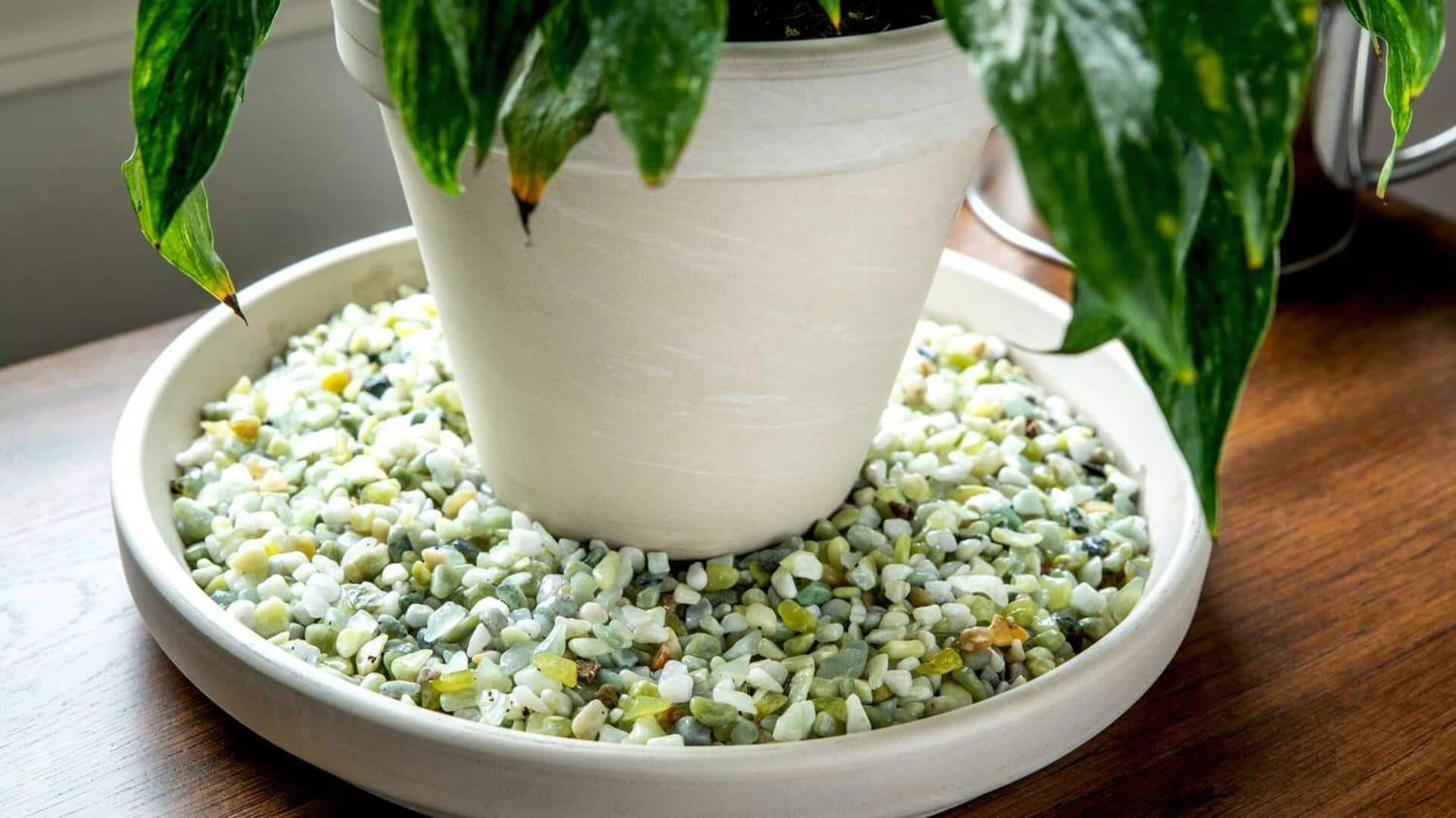
How to create plant humidifiers at home
What's the story
If you want your indoor plants to thrive, maintaining the right humidity level is essential. Though commercial humidifiers are available, creating a plant humidifier using everyday home items can be a great, practical, and budget-friendly alternative. This not only saves you money but also uses things you most likely already have lying around at home. Here are some practical ways to create plant humidifiers.
Pebble tray
Using pebble trays for humidity
A simple way to increase humidity around your plants is by using a pebble tray. Fill a shallow tray with pebbles and add water until it just covers the base of the pebbles. Place your plant pot on top of the pebbles, ensuring it does not sit directly in water. As the water evaporates, it increases humidity around the plant, providing a more suitable environment for growth.
Plant grouping
Grouping plants together
Grouping plants together can naturally increase humidity levels as they release moisture through transpiration. By placing them close together, this moisture creates a microenvironment with higher humidity than surrounding areas. This method works best in rooms where air circulation is limited, allowing moisture to accumulate more effectively around your plants.
Sponge method
DIY sponge humidifier
A sponge can do wonders as a DIY humidifier for small areas or single plants. Simply soak a clean sponge in water and keep it near or under your plant pot (without touching soil or roots). The sponge will gradually release moisture into the air as it dries out, keeping the air around your plant sufficiently humid.
Water bowl technique
Utilizing water bowls nearby
Placing bowls of water near your plants can also help boost ambient humidity levels. As the water evaporates from these bowls, it introduces moisture into the air around your plants. This technique is especially beneficial during dry seasons when indoor air tends to be less humid owing to the heating system or low temperatures outside.